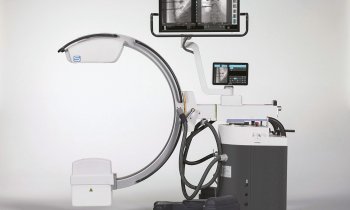Telemonitoring in cardiology: Who benefits?
It's a win-win-win situation: patients, taxpayers and health providers, says Hein Heidbüchel MD PhD, of the Cardiology/Electrophysiology Department at Gasthuisberg University Hospital, University of Leuven, Belgium
Cardiology centres worldwide experience an almost exponential rise in the number of in-hospital follow-ups of patients with implantable devices or heart failure (HF).This not only strains the available personnel resources, it also means a rapidly increasing cost to healthcare payers, especially in fee-for-service reimbursement situations.

We have shown that only 10% of the in-hospital visits for implantable cardioverter defibrillator checks (ICD) are performed for an unscheduled event (e.g. a shock), while 90% are routine visits.1 More importantly, in 78% of these routine visits, not any relevant technical or clinical finding is made, indicating that the patient may have travelled just to be told that everything is normal, and that providers compromise their valuable time for solving problems by reassuring uneventful patients.
Recent years have shown rapid technological innovations for remote monitoring of implanted devices or of clinical parameters in HF patients. With the best systems, data are automatically and wirelessly transferred on a daily basis to servers that analyse the data and notify the responsible physicians of technical malfunctions or parameters of clinical deterioration. The technical reliability has reached coverage of 92% of patient days, and 81% of transmissions are completed within the first day of an acute event, allowing much earlier detection of relevant findings than during a scheduled follow-up visit.
However, remote monitoring requires an important re-organisation of care, ensuring complete coverage of the monitoring and an effective reaction scheme to alert notifications. To provide adequate care, a tiered system of good IT (filtering out only the relevant events and not overwhelming providers with unnecessary information), trained nu rses, physicians, and a well-structured communication protocol need to be developed. The costs of building and operating such an effective telemonitoring clinic are largely unknown. However, realising that only 6.5% of the routine visits require subsequent hospital evaluation (vs. 45% for patients with unforeseen events), as we have shown1 there is a huge margin for optimisation of provider resources. Uncontrolled studies have indicated that to follow-up 100 ICD patients, 1.5 hours per week are needed on nurse-time and 15 minutes on physician time2 with an overall reduction of in hospital visits to 37-58%.2,3 Telemonitoring therefore can be a way for both hospitals and healthcare payers (and thus taxpayers) to save on the costs of follow-up, while improving its effectiveness and responsiveness. This comes in addition to the lower transportation-related costs which are also often covered by insurance.4
Since no prospective data exist on the economic impact of telemonitoring, and since the financial effects on hospitals and physicians will be the major driver in the adoption of this new technology, a European-wide health-economic trial, EuroEco, has begun. This postulates improved cost/effectiveness when follow-up is based on telemonitoring, while in many countries this may be associated with a negative impact on the finances of hospitals themselves (being deprived from fee-for-service clinic reimbursement despite reducing overall costs).
The results will allow data to calculate adequate reimbursement for remote monitoring, so that this new follow-up model will not only provide patients with optimised care, and not only allow reduced follow-up costs for the payers of healthcare, but also guarantee sound finances for providers and thus incentives to implement this new model of care.
That’s a real win-win-win situation.
E-mail contact: hein.heidbuchel@uz.kuleuven.ac.be
References
1. Heidbuchel H, Lioen P, Foulon S, Huybrechts W, Ector J, Willems R, Ector H. Potential role of remote monitoring for scheduled and unscheduled evaluations of patients with an implantable defibrillator. Europace. 2008;10(3):351-357.
2. Ricci RP, Morichelli L, Santini M. Home monitoring remote control of pacemaker and implantable cardioverter defibrillator patients in clinical practice: impact on medical management and health-care resource utilation. Europace. 2008;10(2):164-170.
3. Varma N, Epstein AE, Irimpen A, Schweikert R, Shah J, Love C. Evaluation of efficacy and safety of remote monitoring for ICD follow-up: the TRUST trial. Circulation (Abstract). 2008;118:2316.
4. Fauchier L, Sadoul N, Kouakam C, Briand F, Chauvin M, Babuty D, Clementy J. Potential cost savings by telemedicine-assisted long-term care of implantable cardioverter defibrillator recipients. Pacing Clin Electrophysiol. 2005;28 Suppl 1:S255-259.
01.09.2009











